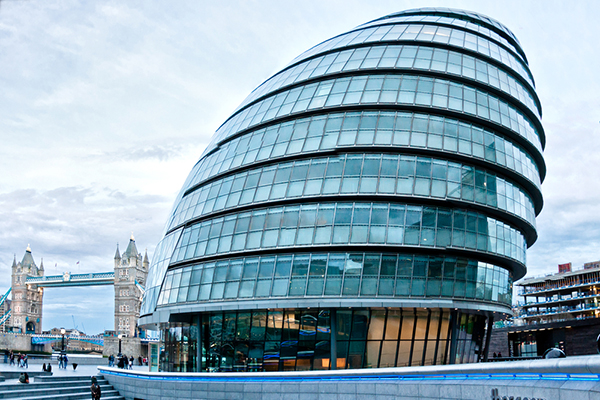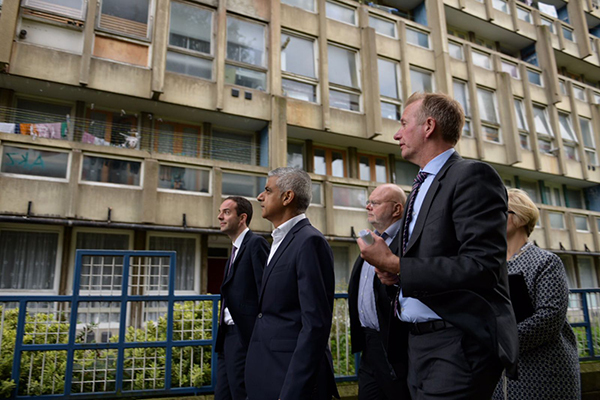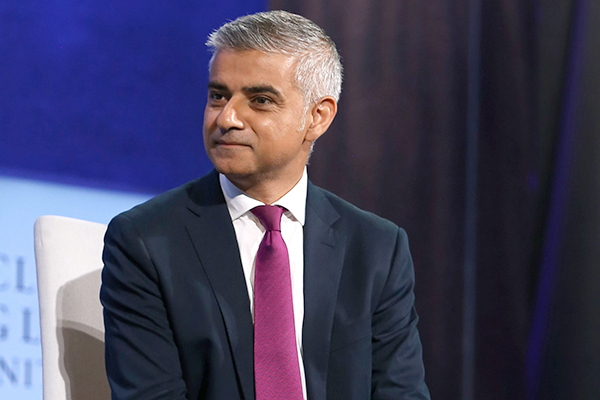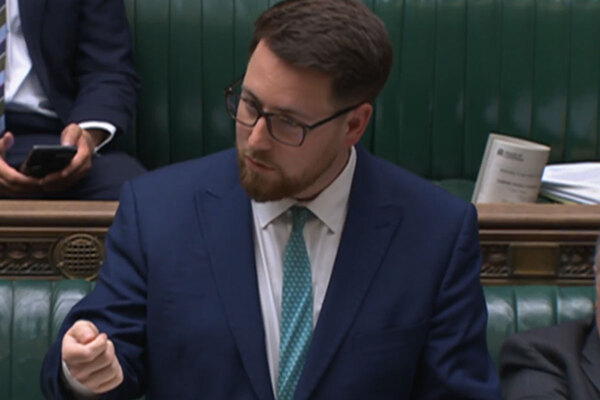You are viewing 1 of your 1 free articles
 James Murray
James MurrayThe City Hall view: scrapping the borrowing cap should just be the start
We need to make clear to ministers that axing borrowing restrictions should just be the first step in allowing local authorities to build, writes James Murray
Immediately after the local elections in May, Sadiq Khan launched ‘Building Council Homes for Londoners’.
As its title unambiguously suggests, this was the first-ever programme from City Hall dedicated to getting new council housing built in the capital.
Six months later, the ambition of councils’ bids has been truly impressive: £1bn of grant announced, supporting 27 local authorities in London to build 14,000 new council homes. Building on this scale represents a five-fold increase over the next four years compared to the past four, and includes more than 11,000 homes at social rent levels.
“It is vital that we continue to make the case for the step change we need from national government.”
As part of the bidding process, councils had also pitched for extra borrowing headroom in their Housing Revenue Accounts – and their bids were almost three times as high as the total of £500m headroom the Treasury made available to us earlier in the year.
Towards the end of the bidding process, we therefore particularly welcomed the prime minister’s decision – following calls the mayor, I, and many others have made over many years – to lift the borrowing cap entirely.
Together with councils we must be very clear, however, that lifting the cap should be only the beginning of reforms to get councils building.
It is vital that, as we show what councils can do with the resources and powers currently available, we continue to make the case for the step change we need from national government so our ambitions can be truly fulfilled.
First, that means substantially greater, longer-term funding to invest in new council homes. Currently, the affordable home funding from national government in London is around £700m a year.
To build the social rented and other genuinely affordable homes we need would require around four times that amount.
As many in the housing association sector are keenly aware, the grant rates need to rise too, as the model of subsidising affordable housing through private development shows its limits.
Second, councils need more capacity in their housing and planning departments to bolster their ability to build more homes following years of cuts.
That’s why, alongside Building Council Homes for Londoners, Sadiq Khan also launched the ‘Homebuilding Capacity Fund’ – £10m ringfenced for councils to make individual bids of up to £750,000 to support councils’ ability to build more homes in their local area.
While that money will by no means fill the gap in councils’ finances, it will help them put in place some of the key resources they need to make their plans a success.
“Councils need more capacity in their housing and planning departments to bolster their ability to build more homes following years of cuts.”
And third, we must see councils and City Hall given a much larger role assembling and acquiring land for social housing.
Our calls for reform to the laws governing land assembly, and the valuation of land to enable more affordable homes to be built, are supported by a growing cross-party consensus.
We must continue to push for the national leadership we need to make the necessary changes a reality.
I do not intend my focus on what other powers and resources we need to give the impression of downplaying how challenging, nor understating how impressive, councils’ current plans are. Indeed, the level of ambition and success in what we are doing now is crucial to our making the case for the greater support we need in the future.
But we must collectively make clear that we will only ever stand a chance of bringing the housing crisis in London under control when councils can build far more – and in pursuit of that goal, what we are seeing now must be just the beginning.
James Murray, deputy mayor for housing and residential development, Greater London Authority
AFFORDABLE HOUSING STARTS IN LONDON APRIL-JUNE 2018
- 630 London Living Rent/shared ownership
- 329 social rent
- 73 other affordable rent
- 65 affordable tenure to be confirmed
- 40 open market
Source: Greater London Authority
At a glance: the different types of rent in London
Picture: Getty
Social rent: The amount of social rent a person pays depends on the location and size of the property, and is set according to a complex formula, but it is typically set at between 50% and 60% of market rent.
Affordable rent: Introduced by the coalition government in 2011, ‘affordable’ rent can be up to 80% of market rent, although many associations have been charging lower than this.
London Affordable Rent: A tenure introduced by Sadiq Khan that is lower than national affordable rent and based on target rent levels towards which social rents are gradually being raised. This makes it higher than average social rents in the capital, but in line with the rent that would likely be charged if a new social rent unit was built and set according to the same formula.
London Living Rent: A rental product aimed at middle-income Londoners introduced by Sadiq Khan, with rents set at one-third of average local earnings.
Target rent: A social rent level calculated by the government, which council and housing associations should use to move their social rents to over time.












